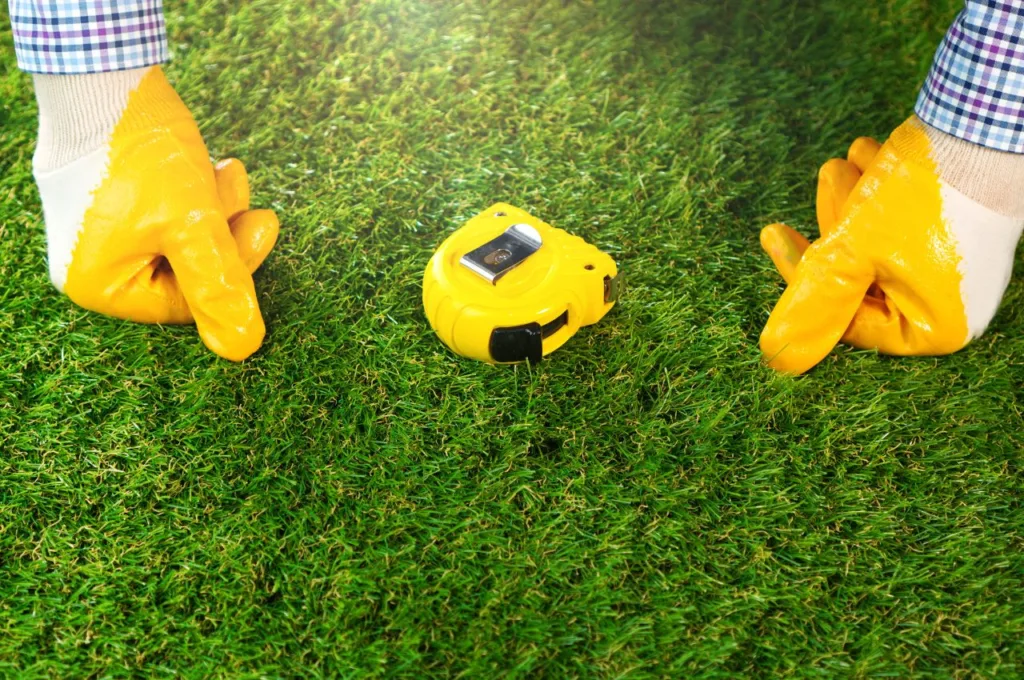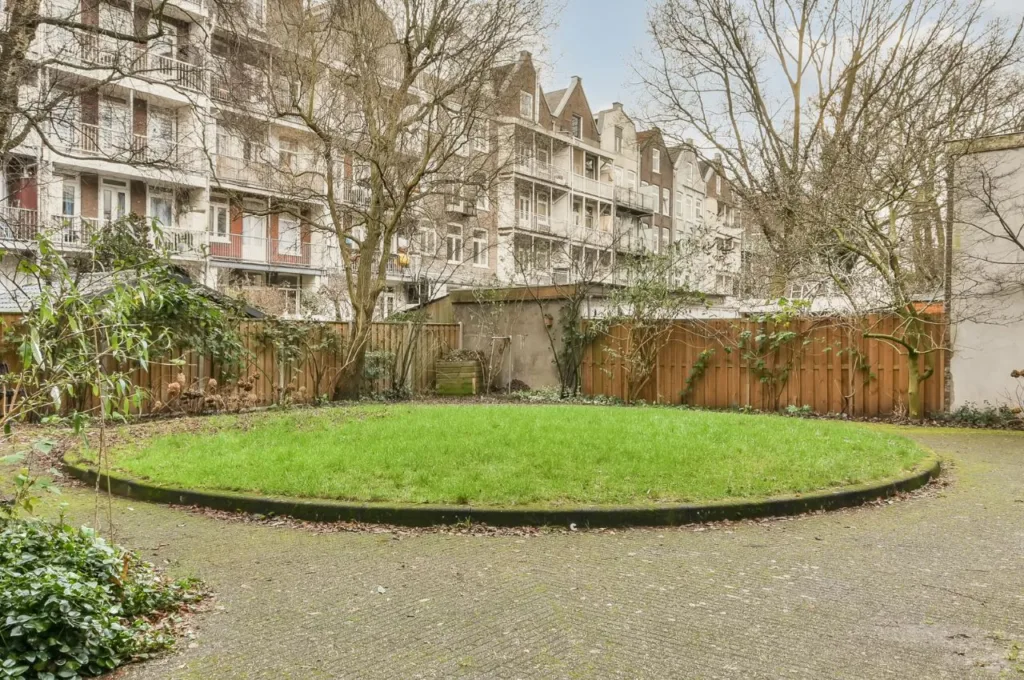Whether you’re buying a new lawn mower, you’re planning to undertake a landscaping or garden renovation project, or you need to buy the right amount of lawn feed or grass seed, you’ll need to know your lawn size.
Luckily, calculating your lawn size is really simple – and we’ve made it even easier with this handy lawn size calculator.
Table of Contents
➗ Lawn Size Calculator
Use this lawn size calculator to determine your lawn’s size in metres squared (m²).
Simply enter your lawn width and length in metres, then click “Calculate”.
Metres squared is the most commonly used measurement for lawn size in the UK. If you prefer to know your lawn’s square footage (ft²), toggle the measurement from “m²” to “ft²”, and make sure to input your lawn’s width and length in feet.
Enter the dimensions of your lawn in meters:

🤏 How Accurately Can You Measure Your Lawn Size?
The quick and easy method of measuring your lawn’s size (length x width in metres) can help you to get an estimate of the area of land on your property – but it won’t provide a 100% accurate measurement.
Very few of us have a lawn that’s a perfect rectangle. Your lawn might be longer or wider in some parts than others, and this will affect your calculation.
If you measure the longest part of your lawn, you’ll probably end up oversizing. On the other end, if you measure the shortest part of your lawn, the lawn size measurement will end up being smaller than your actual lawn.
It’s best to stay somewhere in the middle with your measurements. Try to measure your lawn length and width that’s the most consistent across your garden.
🧐 How To Measure A Circular Lawn
The lawn size calculator in this guide is only intended for measuring square and rectangular lawns.
To measure a circular lawn in m², you’ll need to do the following:
Use a tape measure to measure your lawn’s diameter (across the centre of the circle, touching two opposite points on the circumference) in metres.
Divide the diameter measurement by 2 to calculate the radius.
Calculate the area with this formula: Area (m²) = π (Pi) × Radius². In this formula, Pi (π) is equal to about 3.14159.
For example, if the diameter of your circular lawn is 8 meters:
Radius = Diameter / 2 = 8 meters / 2 = 4 meters
Area = π × (4 meters)² ≈ 3.14159 × 16 square meters ≈ 50.27 square meters (m²)
So, the size of the circular lawn would be approximately 50.27 square meters (m²).

🤔 How To Measure Your Lawn Without A Tape Measure
How can you calculate your lawn’s width and length if you don’t have a tape measure?
No method of self-measuring will be quite as accurate as using an actual measuring tool, but you still have some options.
These include:
👟 Measure With Your Steps
An adult’s normal walking step (not a stride) is about 2.5-3 metres in length. Walk the width of your lawn and count your steps.
If you know you have a long stride, multiply 3 by the number of steps to get an estimate of the number of metres you’ve travelled. If you have a shorter stride, multiply 2.5 by the number of steps you took.
Note down the number, then do the same with the length of your lawn, multiplying the number of steps taken by 2.5 or 3 (depending on your stride length).
Multiply these width and length numbers together to achieve the size estimate in m².
💪 Measure With Your Arms
Stand with your left arm outstretched. The distance between your left hand and your right shoulder is about 1 metre.
You can work out the length and width of your lawn in metres by using your arms as a 1-metre guide.
Begin at one end of your lawn, with the end of the lawn to your left. Stretch your left arm out, and adjust your footing so that your left fingers are about level with the end of the lawn.
Ask a family member to place a rock or a twig on the lawn underneath your right shoulder to mark 1 metre.
Sidestep further down your lawn and repeat the process. This time, your left hand should be about level with the rock or twig that marks 1 metre. Again, ask a family member to place a rock or twig on the ground beneath your right shoulder to mark 2 metres.
Continue the process until you reach the end of your lawn, then count the number of rocks or twigs to get the total number of metres.
Repeat the process, this time measuring your lawn’s width (or length, if you started with width).
Multiply these width and length numbers together to achieve the size estimate in m².

📏 Why Measure Your Lawn Size?
The obvious benefit of measuring your lawn size is that you can obtain an accurate measurement that may be needed for various purposes.
Some of the reasons to measure your lawn size are:
To obtain a quote from gardeners or landscapers who charge based on lawn size.
To buy enough materials for a renovation or landscaping project.
To accurately size a lawn mower for your lawn area.
To buy enough grass seed or fertiliser for your grass.
Overall, knowing the size of your lawn can be incredibly helpful in enabling effective planning, resource allocation, and maintenance for your green space.
It’s also interesting to know your lawn size, even if you have no reason to use this measurement at the moment. You might simply be curious to know how the size of your lawn compares to the lawn size in your local area, for instance.
🏁 Final Word
Thanks for taking the time to check out our lawn size calculator. We hope we helped to speed up your calculations and provided the information you need for your project.
If you like this article, you may also wish to read:
